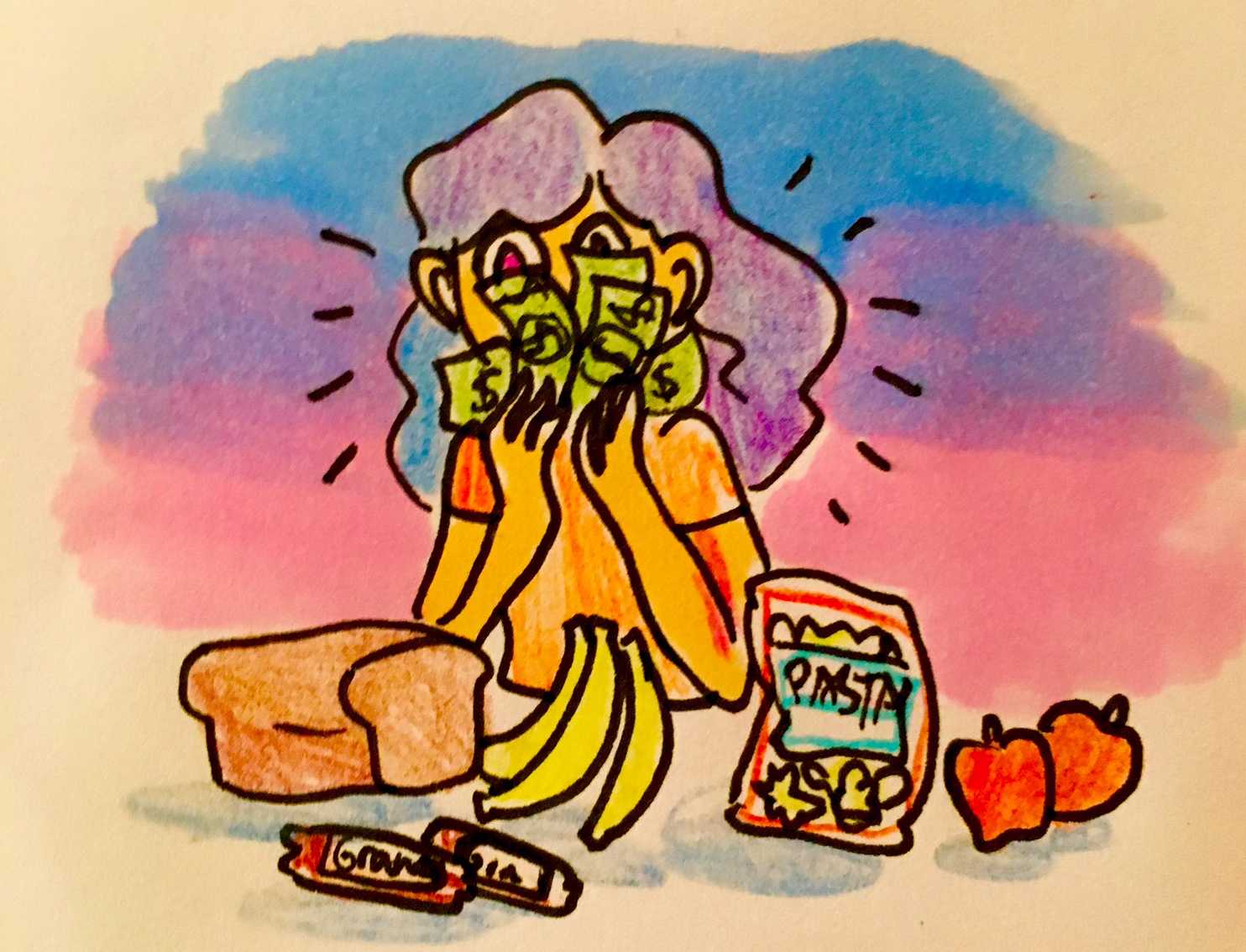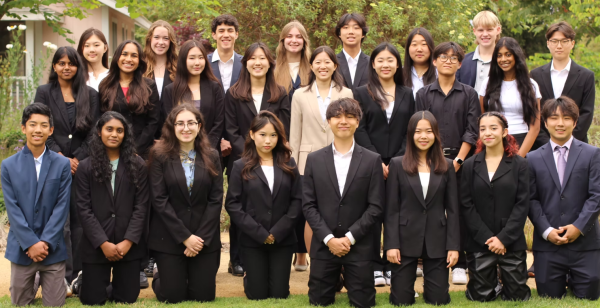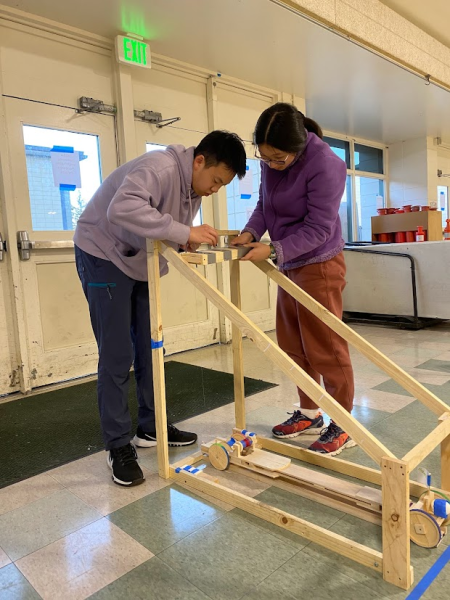Eating on a budget
Training for the struggle of nothing but Poptarts in college
I
’m the one who can never back down from a challenge. As a junior, my life being a poor college student is not far away, and the dinners of Top Ramen are looming closer and closer.
It is important to be healthy, and I have made it my personal mission to find the cheapest, tastiest possible way to eat on a budget when the time has come to pinch your pennies.
I decided to start on Jan 8, ending in seven days on Jan 14. The whole week, I was not be allowed to eat meals cooked by others, order lunch out unless someone offered me something ot to pay and only spend $50 or less the entire time for all of my groceries.
In addition to food, I spent nothing on other-worldly possessions, including clothing and other utilities, unless I really needed them. If I did, they would come out of my week’s budget.
I am not the only one who has attempted to eat on a budget. The most extreme story might be Elon Musk’s food challenge, where he survived on a dollar a day while 17. He wanted to test his saving skills, since he planned to be an entrepreneur, according to Business Insider.
Well, if this lifestyle caused Elon Musk to become a billionaire with a Tesla, what would this challenge bring me?
I started to plan out my meals. After some research on the internet from multiple sources, I found the cheese at Trader Joe’s to be the cheapest in the area. I bought one block of cheddar, and some trail mix along with the cheapest carton of eggs I could find.
My produce consisted of apples and bananas, a head of romaine lettuce and prepackaged salad alongside a bulk bag of carrots.
The night before I started my low budget life, I went shopping in Trader Joe’s and a totally revamped Smart and Final, which, believe it or not, had an organic produce aisle.
The first day was pretty rough. Immediately I realized how little food I bought, and the reality of having to ration became real. But when you’re being thrifty, this is a given. I counted to make sure I was getting enough calories each day. Teen women usually need around 1,800 – 2,400 calories, according to the Academy of Nutrition and Dietetics.
I learned some hard lessons immediately. I tried hard boiling my eggs and found some of them were cracked. I also found halfway through the week I hadn’t used any of the carrots I bought in bulk. I decided food boredom would be my number one culprit in this experiment, since all I really had for sandwich fixings were bananas, peanut butter, lettuce and cheese.
Here’s a loophole to low budget living: if you do not pay for it, you can still eat it. That being said, my friends could pay for my lunch. Yes, if you think about it, when you eat out with friends, half the time you pay. But a free meal earned by anyone who is on a budget is a win in my mind.
On Thursday, my friend and I went to Starbucks and she bought me a cup of fruit.

Halfway through the week, I began to run out of some vital trail mix, and it needed to be replenished. My experiment wasn’t completely true to real life, since I didn’t have a job and earned a paycheck.
To simulate earning money for a budget, my parents paid me the minimum wage for an hour of chores. I later got a strawberry pastry with the money, leaving around $2 to spare.
The end of the first week, I had only spent around $27 with some money to spare, and I hadn’t cooked any of the rice or lentils that I had bought. Encouraged, I decided I would go for a round two.
The second week I renewed my budget, and went in with a changed mentality – I would try to find the cheapest thing in Trader Joe’s.
To my luck, I found bags of crackers and seasonal pumpkin cookie butter for one cent – yep, you read that right. Apparently, Trader Joe’s sells out-of-date seasonal food for only one cent.
Feeling ready to take on the whole week, I walked out of the store with more produce and more food than the first week. I was able to survive the entire week on leftover food from last week and persuade my way into getting meals from friends.
Plan what you buy around what kind of meal you want. I did not do this, so I ended up with no real meat substance for the first couple days, and ate basically just peanut butter and nuts the whole day.
For a general checklist of things to look out for, these are notes I took throughout the two weeks of my experiment:
- Check your eggs before you buy them, some of mine were cracked.
- Remember what you want for a beverage – I live off tea, so the first day was serious withdrawal. I only realized how much tea I drink on a daily basis when I physically could not and the cravings came on around five times that whole day.
- Plan your produce – Do not buy stuff in bulk (like carrots) unless you will eat a lot of them (bananas)
- Quality is better than quantity – I didn’t finish all my eggs, and never even started on my rice or lentils.
- Getting free meals from family and friends is awesome, but you really should pay people back.
I should note the feedback I got from all the people who knew I was doing this challenge. My friends were happy to feed me while I saved money, though they were also happy at the end for me to finally be able to pay them back. Towards the end, my parents were so happy to feed me again and get their fridge space back.
The whole experience was definitely a learning curve. It is hard to live on a budget, much less plan out meals Overall, I love taking on challenges, and I definitely learned a lot about how to prepare meals and find the cheapest deals.








veganvapelord • Feb 21, 2017 at 10:43 pm
Maybe if you learned which wild weeds are edible you could eat those from your backyard.
I do it all the time.